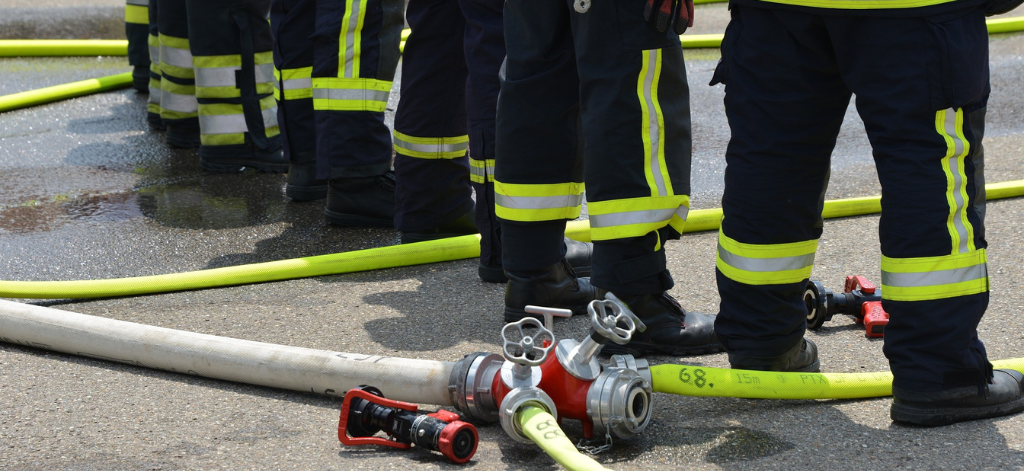PFAS from firefighting foams in the environment
Environment & Climate Change
Brief Description
Poly- and perfluoroalkyl substances (PFAS) are a large group of man-made chemicals used in a variety of manufacturing processes and commercial products. Widespread use of PFAS has been occurring since the 1950s. PFAS are used in product coatings for their resistance to heat, grease, stains and water and in Aqueous Firefighting Foams (AFFs). Products include non-stick cookware, and stain-resistant coatings on fabrics and carpets, water repellent clothing, and products that resist grease, water and oil. Of particular concern in the environment are AFFs, which have been used by numerous industries and fire services during training, and in extinguishing large fires at a range of site types.
Decades of their use and disposal has led to PFAS becoming increasingly widespread. PFAS are extremely persistent and highly soluble chemicals, allowing them to easily pass into water, soil, and air. Areas where firefighting foams have been deployed (such as training and testing grounds), are likely to have been exposed to PFAS, and are potentially contaminated. Some PFAS have been designated as Persistent Organic Chemicals (POPs).
In Ireland, PFAS are currently being studied to examine the potential extent of exposure such as under the National Implementation Plan on POPs. Some regulations are already in place, restricting their circulation, such as the International Stockholm Convention on (POPs) and the EU POPs Regulation. This has banned or restricted the use of some PFAS in products. The new EU Drinking Water Directive will come into force in January 2026, whereby public water supplies will be regulated in accordance with the Directive. It includes limits for total PFAS of 0.5 µg/L and the sum of 20 PFAS of most concern of 0.1 µg/L.
Management of PFAS is a new challenge facing environmental managers due to their unique chemistry and environmental behaviour. Fehily Timoney and Company (FT) are at the forefront of assessment of PFAS contamination and in the provision of sustainable management solutions. We work with world-class laboratories and PFAS experts to carry out risk assessment and develop and apply remediation measures at contaminated sites.
FT Responsibilities
Legislation and the regulatory environment for PFAS is constantly in flux, and so too are the capabilities of laboratories as they keep up with the latest research developments. Our dedicated members of staff sit on the CIRIA PFAS Forum – a programme for knowledge sharing amongst leading scientists and environmental managers. This, alongside engagement with laboratories and experts keeps us abreast of this developing field.
We have developed a four-step approach to PFAS management and remediation of contaminated sites for our clients:
- Risk Identification
It is critical to undertake preliminary assessments to understand the contamination type. Through soil, concrete, surface water, groundwater, and drinking water sampling, coupled with desktop studies and preliminary assessment, we will gain an understanding of current level of contamination, and its potential for migration and risk exposure. Where firefighting foams have been used, an understanding of foam types used, storage practices, training areas, and storm water management is required to quantify risk. - Site Investigation
Our team of scientists, engineers, and hydrologists will undertake a detailed site investigation using trial pits, boreholes, silt trenches, groundwater wells, drainage network, surface water streams and sediment, concrete, soil and soil stockpiles. This is used to define the extent of contamination in the environment, sources and likely pathways. - Risk Assessment
Stakeholder engagement is paramount for successful remediation of contaminated sites. FT will conduct preliminary and detailed quantitative risk assessments, utilising the key insights provided by our clients. Our risk assessments include remediation options which will be presented for consideration to clients and stakeholders so they remain informed, every step of the way. - Management Plan
Finally, a management plan is put in place. FT provides drainage design, materials management, and remediation contracts to give our clients peace of mind that any contamination is appropriately managed and the highest standard of remediation is put in place. Remediation can range from quick wins such as site clean-up, diversion of storm water, isolation of source to more site specific targeted remediation by specialist contractors.
For information please contact Bernadette Guinan, Declan Morrissey and Tanya Ruddy at info@ftco.ie.







